My 2016 MLB Hall of Fame Selections
On Wednesday (January 6th), MLB will announce the 2016 inductees into the MLB Hall of Fame. The voting for Hall of Fame inclusion always brings about great debate about who is worthy, what numbers are needed, and who is left on the outside looking in. Some players, like Babe Ruth and Hank Aaron and Walter Johnson, are clear and unquestionably qualified entrants. Others, like Dale Murphy and Kevin Brown, are very good players who are probably just short of some measurable criteria for inclusion. And still others, like Barry Bonds, Roger Clemens, and Mark McGwire, elicit some of the most strident discussions about their worthiness. And then, all alone at the top of the trash heap, stands the king of the mountain – Pete Rose.
Members of the Magnolia Chapter (the Georgia chapter) of the Society for American Baseball Research (SABR) were asked to submit their ballots for the 2016 MLB Hall of Fame class. Here, I will discuss the players I voted for, and why. I used multiple criteria to weigh which players I was considering. I am a fan of removing as much subjectivity as possible from these types of awards, but sometimes it is impossible to remove all subjectivity. While I may believe a particular player was dominant for a period of time, my definition of ‘dominant’ may be different than another’s. That’s the great thing about this game.
Criteria For Selection
I didn’t use any type of ‘system’ to develop which players I was selecting. Selections were made using various factors:
- Career WAR rankings (both fWAR and bWAR)
- Peak WAR rankings (using JAWS, a method of comparing players to currently enshrined MLB Hall of Fame players)
- Performance compared to peers (using wRC+ and ERA-)
- Defensive contributions
- Records set and/or broken.
In addition, my selections also had to meet the traditional requirements to admission into the MLB Hall of Fame. Those requirements:
3. Eligible Candidates — Candidates to be eligible must meet the following requirements:
A. A baseball player must have been active as a player in the Major Leagues at some time during a period beginning fifteen (15) years before and ending five (5) years prior to election.
B. Player must have played in each of ten (10) Major League championship seasons, some part of which must have been within the period described in 3(A).
C. Player shall have ceased to be an active player in the Major Leagues at least five (5) calendar years preceding the election but may be otherwise connected with baseball.
D. In case of the death of an active player or a player who has been retired for less than five (5) full years, a candidate who is otherwise eligible shall be eligible in the next regular election held at least six (6) months after the date of death or after the end of the five (5) year period, whichever occurs first.
E. Any player on Baseball’s ineligible list shall not be an eligible candidate.
Sorry, Pete. However, I bet you will remind us next November that you think you should be eligible.
Now…on to the list. First, we need to know who is on the ballot. You can see the complete list of 2016 eligible players here. There was no good way to embed the table without losing some functionality and information. Plus, the guys at Baseball Reference do tremendous work. You should already be visiting their site.
Next, we look at who didn’t make it.
Unworthy:
Brad Ausmus, David Eckstein, Mike Sweeney, Mike Lowell, Garrett Anderson, Mark Grudzielanek, Randy Winn, Luis Castillo, Mike Hampton, Jason Kendall, and Troy Glaus.
Good, but still not (James) Worthy:
Lee Smith, Nomar Garciaparra, Fred McGriff, Sammy Sosa, Jim Edmonds, Mark McGwire,
Missed the cut:
Jeff Kent – a very good player who, in a different year with different circumstances, probably gets in. His numbers will not have changed, but the vote allocated to him may not then have to go to righting a wrong caused by previous years of apathy by the BBWAA.
Trevor Hoffman – Similar to Kent, Hoffman gets in on a different ballot. I don’t penalize Hoffman (or others) because they were’just’ closers who pitched every couple of days. In this era of specialized relievers, I’m perfectly willing to vote for a relief pitcher. After all, there are more relievers on a team than starters, and they have been part of the game since Cy Young was pitching 30 complete games a week.
Billy Wagner – Wagner would be the likely first closer I vote in. He was more dominant than Hoffman, though without as long a career.
Gary Sheffield – Sheffield has very good career numbers, and very certainly should be considered for the MLB Hall of Fame. There have always been allegations of PED usage, which some might hold against him. He was also never considered ‘the best’ in his era. But this boils down to a completely subjective matter…Sheffield isn’t a very likable guy, and I don’t particularly like him, so I’m going to vote for the guys I feel comfortable putting in ahead of him. But on the merits, he’s worthy of discussion.
Larry Walker – I go back and forth on Walker. He was an above average hitter in every year of his career that saw him take 60 at bats. His 58.6 JAWS is above the average JAWS rating for Hall of Fame right fielders. Some will hold his many years at Coors Field up as a reason his numbers are so high, but wRC+ accounts for park and league differences. His 140 wRC+ is higher than Hall of Fame outfielders Duke Snider, Reggie Jackson, Tony Gwynn, Roberto Clemente, and Ken Griffey Jr. He makes it in a different season.
#10: Mike Piazza
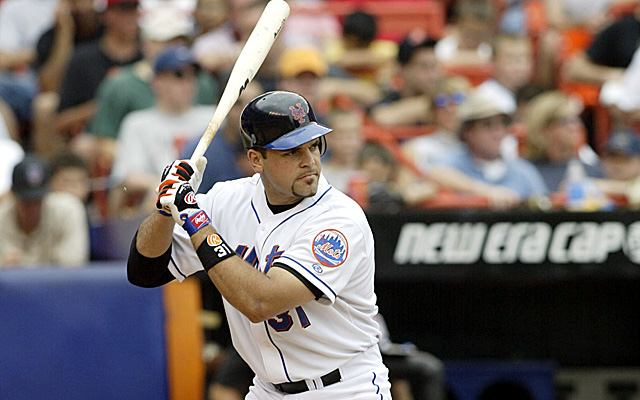
| Year | Age | Tm | Lg | PA | R | H | 2B | 3B | HR | RBI | SB | CS | BB | SO | TB | GDP | HBP | IBB | |||||
|---|---|---|---|---|---|---|---|---|---|---|---|---|---|---|---|---|---|---|---|---|---|---|---|
| 16 Yrs | 7745 | 1048 | 2127 | 344 | 8 | 427 | 1335 | 17 | 20 | 759 | 1113 | .308 | .377 | .545 | .922 | 142 | 3768 | 229 | 30 | 146 | |||
| 162 Game Avg. | 656 | 89 | 180 | 29 | 1 | 36 | 113 | 1 | 2 | 64 | 94 | .308 | .377 | .545 | .922 | 142 | 319 | 19 | 3 | 12 | |||
Pros: 1993 Rookie of the Year, 12x All-Star; 10x Silver Slugger; 7x Top-10 MVP finish.
And oh, yeah…he’s the best hitting catcher in history. His 142 OPS+ (which, if you recall, adjusts for league averages, allowing us to compare players from different eras to one another) is significantly higher than soon-to-be fellow hall of Fame catchers Mickey Cochrane (129 OPS+), Bill Dickey (127), Johnny Bench (126), and Yogi Berra (125).
Cons: May have cost his teams games with his defense; poor baserunner; whispers of PED usage, including, reportedly, his own off-the-record admission:
As the hundreds of major league ballplayers who turned to performance-enhancing drugs throughout the 1990s did their absolute best to keep the media at arm’s length, Piazza took the opposite approach. According to several sources, when the subject of performance enhancing was broached with reporters he especially trusted, Piazza fessed up. “Sure, I use,” he told one. “But in limited doses, and not all that often.” (Piazza has denied using performance-enhancing drugs, but there has always been speculation.) Whether or not it was Piazza’s intent, the tactic was brilliant: By letting the media know, off the record, Piazza made the information that much harder to report. Writers saw his bulging muscles, his acne-covered back. They certainly heard the under-the-breath comments from other major league players, some who considered Piazza’s success to be 100 percent chemically delivered. “He’s a guy who did it, and everybody knows it,” says Reggie Jefferson, the longtime major league first baseman. “It’s amazing how all these names, like Roger Clemens, are brought up, yet Mike Piazza goes untouched.”
“There was nothing more obvious than Mike on steroids,” says another major league veteran who played against Piazza for years. “Everyone talked about it, everyone knew it. Guys on my team, guys on the Mets. A lot of us came up playing against Mike, so we knew what he looked like back in the day. Frankly, he sucked on the field. Just sucked. After his body changed, he was entirely different. ‘Power from nowhere,’ we called it.”
When asked, on a scale of 1 to 10, to grade the odds that Piazza had used performance enhancers, the player doesn’t pause.
“A 12,” he says. “Maybe a 13.”
Piazza doesn’t have the overall WAR totals of some of the others on this ballot, but, adjusted for position, he is well above the average JAWS ranking for a Hall of Fame catcher.
#9: Edgar Martinez
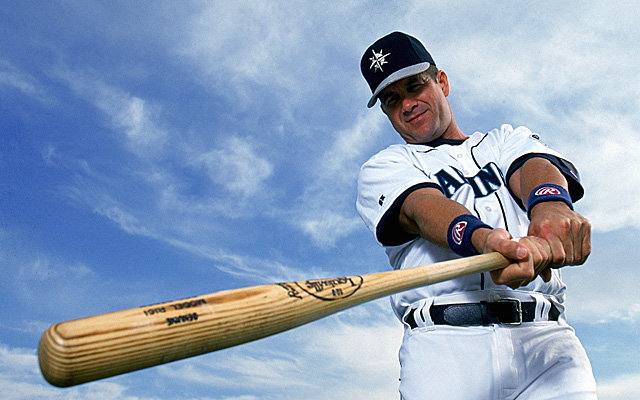
| Year | Age | Tm | Lg | PA | AB | R | H | 2B | 3B | HR | RBI | SB | CS | BB | SO | TB | GDP | HBP | IBB | |||||
|---|---|---|---|---|---|---|---|---|---|---|---|---|---|---|---|---|---|---|---|---|---|---|---|---|
| 18 Yrs | 8674 | 7213 | 1219 | 2247 | 514 | 15 | 309 | 1261 | 49 | 30 | 1283 | 1202 | .312 | .418 | .515 | .933 | 147 | 3718 | 190 | 89 | 113 | |||
| 162 Game Avg. | 684 | 569 | 96 | 177 | 41 | 1 | 24 | 99 | 4 | 2 | 101 | 95 | .312 | .418 | .515 | .933 | 147 | 293 | 15 | 7 | 9 | |||
Pros: 2x AL Batting Title Winner; 7x All-Star; 5x Silver Slugger; 2x Top-10 MVP finish; MLB named an award after him (for the best DH)
Cons: Nearly full-time DH, playing only 30% of his games in the field; Never an overly dominant force in a lineup; Defense when he played it was very bad.
When considering only those plate appearances as a DH, Martinez is the best hitter at his position of all-time. Even the recently inducted Frank Thomas, who spent a large portion of his career as a DH (56%), was not as good a DH as Martinez. His career .418 OBP would rank 13th among Hall of Famers, just ahead of Stan Musial. His career OPS+ ranks 35th all-time, and most ahead of him are already in the MLB Hall of Fame. When limited to just those in the Hall of Fame already, he moves up to 22nd, tied with Mike Schmidt, Willie Stargell, and Willie McCovey.
There have been four seasons in MLB history that saw a batter hit .325 or higher, with 25+ HR, 50+ doubles, and 110+ walks. Two of them are by Edgar Martinez. The other 18,661 players in MLB history combined for the other two seasons. Martinez is the only player to do it while striking out fewer times than he walked in that season. Whether he played in the field ‘enough’ or not, that’s an accomplishment.
Should Martinez be punished for not playing a defensive position? The DH has been an official part of the game for over 40 years; it’s been around longer than the free agency season that many fans follow so closely now. I don’t hold it against Martinez that his team decided to utilize him in a way that hid his weaknesses. But I certainly understand those who suggest he may not be Hall-worthy because he was primarily a DH. The same argument will come up in a few years when David Ortiz hits the ballot. Except, Ortiz, hero to many for his ‘clutch’ performances, has played even fewer games in the field than Martinez has. And Martinez has topped him offensively in several categories. I guess it’s like deciding whether a punter should be voted in to the Hall of Fame. They don’t do much, they play so little, they aren’t real athletes, but they are part of the game. And some of them are the best at what they do.
#8: Tim Raines
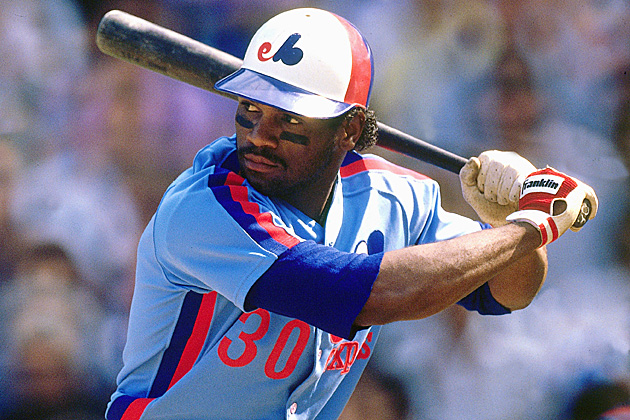
| Year | Age | Tm | Lg | PA | R | H | 2B | 3B | HR | RBI | SB | CS | BB | SO | TB | GDP | HBP | IBB | |||||
|---|---|---|---|---|---|---|---|---|---|---|---|---|---|---|---|---|---|---|---|---|---|---|---|
| 23 Yrs | 10359 | 1571 | 2605 | 430 | 113 | 170 | 980 | 808 | 146 | 1330 | 966 | .294 | .385 | .425 | .810 | 123 | 3771 | 142 | 42 | 148 | |||
| 162 Game Avg. | 671 | 102 | 169 | 28 | 7 | 11 | 63 | 52 | 9 | 86 | 63 | .294 | .385 | .425 | .810 | 123 | 244 | 9 | 3 | 10 | |||
Pros: 1x NL Batting Title Winner (beating out an in-his-prime Tony Gwynn); 7x All-Star; 3x Top-10 MVP finish; 4x Stolen Base Champion (6 straight years of 70+ SB); World Series winner
Cons: Never a dominant hitter; Had a drug problem; Defense was spotty later in career; May have hung around a couple of years too long; Isn’t Rickey Henderson; Played at the same time as Rickey Henderson.
“He’s a good leadoff hitter, but he’s not Rickey Henderson.” That’s essentially the asinine argument that has kept Tim Raines out of the Hall of Fame for 8 years. ‘Yeah, Raines is good, but not as good as one of the top 15 position players ever, who also happened to play at the same time as him, so he’s not worthy’. What horseshit. People like to point out that Raines wasn’t as good a hitter as Henderson, especially at leadoff. Raines had a career OPS of .810, while Henderson had a career OPS of .820. That’s hardly a difference of note over a 20 year span. And Raines posted an .813 OPS at leadoff for his career, vs an .822 OPS for Henderson at leadoff. Again, hardly a difference. And, just to clarify some comments made on various pages, Henderson was not the best leadoff hitter of all-time. Oh…he was also a better base stealer than Henderson, converting 84.7% of his attempts, compared to 80.8% for Henderson.
Quick…name all the players in history with at least 2600 hits and 800 stolen bases. Did you say Ty Cobb, Rickey Henderson, and Lou Brock? Well, don’t forget Tim Raines. How about naming the only player in MLB history with a career in which he hit 400+ doubles, 100+ triples, 150+ HR, and 600+ SB. Can you do that? Here’s a hint…he spent 13 years toiling in obscurity in Montreal, often with a vial of cocaine in his uniform pocket.
Hopefully, by the time this is published, the travesty will have been corrected and Tim Raines will be in the MLB Hall of Fame. Raines deserves to be judged on his merits, and not be punished for simply not being one of the all-time greats who happened to have an overlapping career. That would be like saying that Tom Glavine doesn’t deserve to be in the Hall of Fame because he was not as good as Greg Maddux. Raines has a JAWS score of 55.6, which puts him above the average JAWS score of other Hall of Famers at his position. He’s worthy.
/end rant.
#7: Alan Trammell
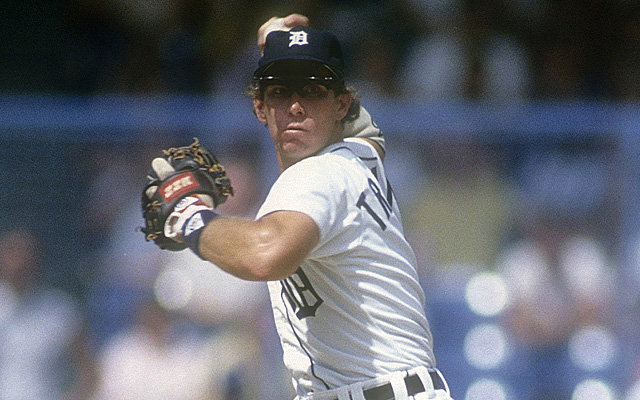
| Year | Age | Tm | Lg | PA | R | H | 2B | 3B | HR | RBI | SB | CS | BB | SO | TB | GDP | HBP | IBB | |||||
|---|---|---|---|---|---|---|---|---|---|---|---|---|---|---|---|---|---|---|---|---|---|---|---|
| 20 Yrs | 9376 | 1231 | 2365 | 412 | 55 | 185 | 1003 | 236 | 109 | 850 | 874 | .285 | .352 | .415 | .767 | 110 | 3442 | 156 | 37 | 48 | |||
| 162 Game Avg. | 662 | 87 | 167 | 29 | 4 | 13 | 71 | 17 | 8 | 60 | 62 | .285 | .352 | .415 | .767 | 110 | 243 | 11 | 3 | 3 | |||
Pros: 6x All-Star; 3x Top-10 MVP finish; 4x Gold Glove; 3x Silver Slugger; World Series winner
Cons: Never a dominant hitter; Played at the same time as some defensive greats; Never “flashy”; Due to his contemporaries, was never considered ‘best at his position’.
Trammell is an interesting case. He was never ‘the best’. There were better hitters at SS than him. There were better defenders at SS than him. There were better baserunners at SS than him. But when it is all said and done, only six shortstops have ever put up a higher career bWAR than Trammell. Five of them are currently in the Hall of Fame; the sixth, Derek Jeter, will join them shortly. Of the 17 current Hall of Fame shortstops, Trammell would rank 6th in bWAR. His JAWS score is above the average HoF score for his position.
Thomas Poe at the Braves page at About.com made a great point about Trammell. He compares very favorably for his career with Hall of Famer Barry Larkin:

Larkin is considered by most observers to be a clear Hall of Fame choice. But as we see, Trammell compares favorably in most categories. The trade-off is a little less bat for Trammell, in place of a little better defense.
Given that this is Trammell’s last year on the ballot, I had to go ahead and vote him in.
#6: Jeff Bagwell
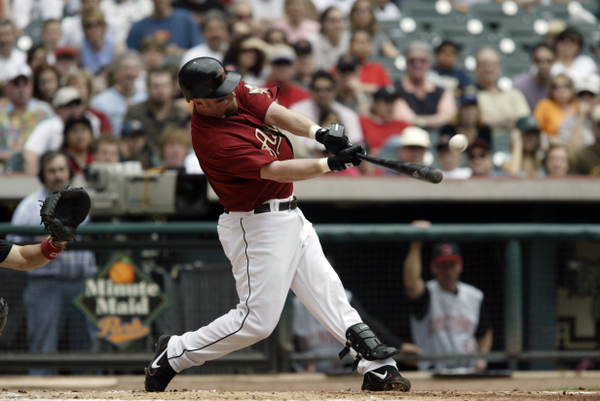
| Year | Age | Tm | Lg | PA | R | H | 2B | 3B | HR | RBI | SB | CS | BB | SO | TB | GDP | HBP | IBB | |||||
|---|---|---|---|---|---|---|---|---|---|---|---|---|---|---|---|---|---|---|---|---|---|---|---|
| 15 Yrs | 9431 | 1517 | 2314 | 488 | 32 | 449 | 1529 | 202 | 78 | 1401 | 1558 | .297 | .408 | .540 | .948 | 149 | 4213 | 221 | 128 | 155 | |||
| 162 Game Avg. | 711 | 114 | 174 | 37 | 2 | 34 | 115 | 15 | 6 | 106 | 117 | .297 | .408 | .540 | .948 | 149 | 317 | 17 | 10 | 12 | |||
Pros: 1991 Rookie of the Year; 1994 MVP (unanimous); 4x All-Star; 6x Top-10 MVP finish; 1x Gold Glove; 3x Silver Slugger;
Cons: Are there any? Defensively limited (?); Had muscles and hit HRs, so clearly a PED abuser (despite no reasonable connections to PED).
Why is Bagwell not already in the Hall of Fame? Oh, yeah…the voters are morons. Bagwell’s 142 OPS+ is good for 7th all-time among first basemen. He would rank 6th among the Hall of Famers who primarily played first base. He was also a very well-rounded hitter; he’s one of only two players in history (at any position) to have a .400 OBP, 400 HR, 200 SB, and 1500 RBI in their careers. The other player is
Barry Bonds, arguably one of the best hitters in MLB history. Bagwell’s career OPS is good for 21st all-time, making him clearly an elite hitter in the game’s history. Bagwell played most of his career in the Astrodome, notorious for suppressing offense. Had he played in a more neutral park, his counting numbers would very likely have been higher than they are.
Bagwell has never been linked by any reasonable or reputable claims to PED, yet many continue to insinuate that he was tainted. He wasn’t named in the Mitchell Report, he wasn’t in the leaked list of failed tests, he wasn’t linked via court testimony or congressional hearings, he wasn’t linked in the self-survey, and he hasn’t been linked by the MLB drug testing program. Yet, people are unwilling to give Bagwell the same legitimacy they give to Fred McGriff or Craig Biggio, simply because Bagwell worked out more and harder. Bagwell himself has spoken out against steroids and users, and explained his change in physique (he started working out partly to help keep him away from the types of things that ultimately killed teammate Ken Caminiti).
The BBWAA needs to stop acting as some sort of self-appointed guardians of perceived (and imagined) moral decay, protecting the baseball public from the threats of big muscles, and instead do what they were asked: vote on the best players in the game’s history. Their stance of ‘PED bad, virulent racism acceptable’ is just indefensible.
#5: Curt Schilling
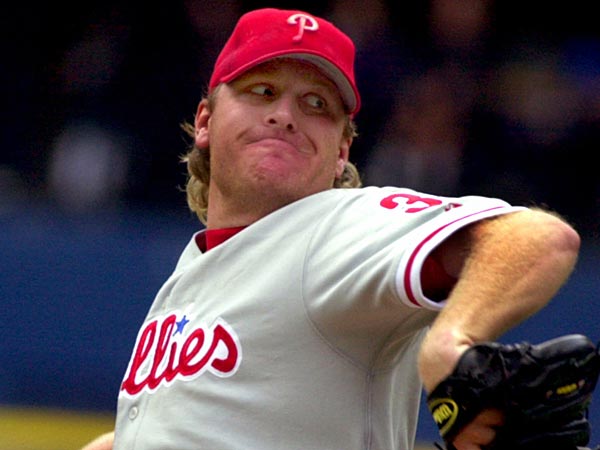
| Year | Age | Tm | Lg | W | L | G | GS | CG | SHO | SV | IP | H | R | ER | HR | BB | IBB | SO | HBP | ||||||
|---|---|---|---|---|---|---|---|---|---|---|---|---|---|---|---|---|---|---|---|---|---|---|---|---|---|
| 20 Yrs | 216 | 146 | .597 | 3.46 | 569 | 436 | 83 | 20 | 22 | 3261.0 | 2998 | 1318 | 1253 | 347 | 711 | 43 | 3116 | 52 | 127 | 3.23 | 1.137 | 8.6 | |||
| 162 Game Avg. | 15 | 10 | .597 | 3.46 | 38 | 30 | 6 | 1 | 1 | 221 | 203 | 89 | 85 | 23 | 48 | 3 | 211 | 4 | 127 | 3.23 | 1.137 | 8.6 | |||
Pros: 6x All-Star; 4x Top-5 Cy Young finish; 3x 20-Game Winner; 2x Top-10 MVP finish; 3x World Series winner; World Series MVP
Cons: Career Win total lower than some like to see in the HoF; Never won a major season award; total d-bag
Schilling never won a Cy Young. He never won an MVP award. The voters obviously didn’t think he was the best in his league in any single season, so how can they be expected to think he was one of the best of all time? Well, one reason he never won a major award is because his competition for most of his career included Roger Clemens, Randy Johnson, Greg Maddux, Pedro Martinez, John Smoltz, Tom Glavine, Mike Mussina. Those are some very good names, and there is a common bond between them. See if you can figure out what that bond is…
Schilling played half of his career on some pretty bad Philadelphia teams, so his win total is a little lower than the ‘magic number’ of 300 wins. He also spent the vast majority of his career in a 5-man rotation, which didn’t exist in the days of Tom Seaver, Cy Young, and others from a different era. Schilling has more wins than Don Drysdale and Sandy Koufax, and compares favorably with Catfish Hunter and Pedro Martinez. His winning percentage of .597 is exactly the same as 363-game winner Warren Spahn and better than 1/3 of the 300-game winners.
Schilling never won a Cy Young award. Does that mean he wasn’t a dominant pitcher? For that, we look at his peripheral stats. His ERA+ (adjusted for league average, so compares him to the guys and league he played against) of 127 is exactly the same career mark of accepted Hall of Fame pitchers Tom Seaver and Bob Gibson, ranking 15th among all Hall of Fame (or ballot eligible) pitchers. It’s higher than HoF stalwarts like Don Drysdale, Jim Palmer, Warren Spahn, Steve Carlton, and Nolan Ryan. He also has the magic number of 3,000 strikeouts. His career FIP of 3.23 is better than Greg Maddux and Bob Feller. Schilling also exceeds the average JAW score for HoF starting pitchers.
Schilling is considered by pretty much anyone who has interacted with him to be a complete asshat, but he’s worthy of HoF consideration.
#4: Mike Mussina
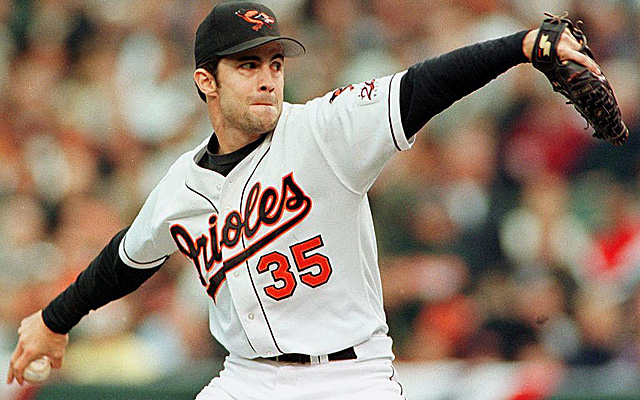
| Year | Age | Tm | Lg | W | L | G | GS | CG | SHO | SV | IP | H | R | ER | HR | BB | IBB | SO | HBP | ||||||
|---|---|---|---|---|---|---|---|---|---|---|---|---|---|---|---|---|---|---|---|---|---|---|---|---|---|
| 18 Yrs | 270 | 153 | .638 | 3.68 | 537 | 536 | 57 | 23 | 0 | 3562.2 | 3460 | 1559 | 1458 | 376 | 785 | 29 | 2813 | 60 | 123 | 3.57 | 1.192 | 7.1 | |||
| 162 Game Avg. | 17 | 10 | .638 | 3.68 | 34 | 34 | 4 | 1 | 0 | 226 | 219 | 99 | 92 | 24 | 50 | 2 | 178 | 4 | 123 | 3.57 | 1.192 | 7.1 | |||
Pros: 5x All-Star; 7x Gold Glove winner; 6x Top-5 Cy Young finish; 1x 20-Game Winner; 11x Top 10 ERA in league
Cons: No ‘magic numbers’; Never won a major season award; Played in an era with many other great pitchers
Mussina is another, similar to Schilling, who may not seem to have the ‘generally accepted’ numbers for Hall of Fame inclusion. He doesn’t have 300 wins. He doesn’t have 3,000 strikeouts. His career ERA of 3.68 is closer to 4.00 than to 3.00. He was never really dominant.
But, is it a bad thing to be really, really good for a really long time, when your contemporaries are also Hall of Fame caliber pitchers? Mussina always kept his team in position to win. Mussina’s strength was his great control and run prevention. His 3.58 Strikeouts/Walk is the 4th best among HoF (or ballot eligible) pitchers. Only Cy Young, Pedro Martinez, and the aforementioned douchebag Curt Schilling have better career control rates. Many of the same arguments made for Schilling’s inclusion apply to Mussina.
Mussina’s ERA of 3.68 ranks 47th out of 50 HoF starters. But this is why using arbitrary numbers without context can be very misleading. Mussina played his entire career in the PED era, in the AL, with the DH instead of a pitcher batting. When comparing Mussina to his league and era, he suddenly improves to 23rd among HoF pitchers in ERA+…better than Spahn, Glavine, or Ferguson Jenkins.
#3: Roger Clemens
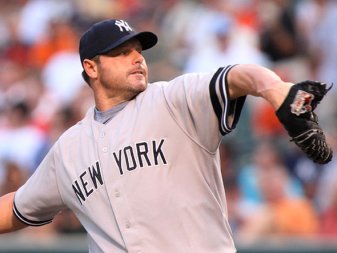
| Year | Age | Tm | Lg | W | L | G | GS | CG | SHO | SV | IP | H | R | ER | HR | BB | IBB | SO | HBP | ||||||
|---|---|---|---|---|---|---|---|---|---|---|---|---|---|---|---|---|---|---|---|---|---|---|---|---|---|
| 24 Yrs | 354 | 184 | .658 | 3.12 | 709 | 707 | 118 | 46 | 0 | 4916.2 | 4185 | 1885 | 1707 | 363 | 1580 | 63 | 4672 | 159 | 143 | 3.09 | 1.173 | 8.6 | |||
| 162 Game Avg. | 17 | 9 | .658 | 3.12 | 34 | 34 | 6 | 2 | 0 | 236 | 201 | 91 | 82 | 17 | 76 | 3 | 224 | 8 | 143 | 3.09 | 1.173 | 8.6 | |||
Pros: 300-game winner; 4,000 strikeouts; 7x Cy Young Winner; 1x MVP winner; 11x All-Star; 7x Gold Glove winner; 10x Top-5 Cy Young finish; 5x Top 10 MVP finish; 6x 20-Game Winner; 7x ERA leader; 5x MLB Strikeout leader; MLB All-Century Team; 2x World Series winner; Set MLB record for most strikeouts in a 9-inning game (20); Only player ever to strike out 20 players in a game on two occasions; 2x ‘Pitching Triple Crown’ winner
Cons: PED allegations; kind of jackhole
Do we really have to have a discussion about whether Clemens is one of the best pitchers to ever throw a baseball in the major leagues? Yes, there are allegations of PED usage. But, the guys he was pitching against were using, too. And he still was able to dominate them. As it stands among HoF pitchers, only Pedro Martinez and Walter Johnson were more dominant against their leagues during their careers.
Even if you cut out a large portion of Clemens’ career, he is very likely still a Hall of Famer. Most reports have Clemens beginning his PED usage near the end of the 1998 season. If we simply take Clemens’ career from 1986-1998, we get a pitcher who was 233-124, with a 2.95 ERA, 151 ERA+, 44 shutouts, and 3,153 strikeouts. That would be the second best ERA+ of all time; he actually regressed in that regard after starting PED usage. The win total would be good for 30th among HoF starters, better than Catfish Hunter, Pedro Martinez, Don Drysdale, and many others. The strikeout total would be good for 12th all-time, more than Bob Gibson and Warren Spahn. His winning percentage would be 6th all-time, just behind Sandy Koufax, and ahead of Jim Palmer and Lefty Gomez. His career FIP to that point would be 10th best of all-time, just behind Koufax, ahead of Gibson. He wold still be a 5-time 20-Game winner, a 6-time ERA champion, a 5-time league strikeout champion, a 5-time Cy Young winner, and a league MVP.
That’s all BEFORE he started using PED. His ERA after starting PED was 18% higher than his career rate to that point. His FIP increased by 23% after starting PED. Clemens’ PED usage certainly helped him pitch longer to accumulate some higher win and strikeout totals, but he was not some guy who was magically transformed by pills. He was already one of the most dominant starting pitchers the game had ever seen…all before he started using.
#2: Barry Bonds
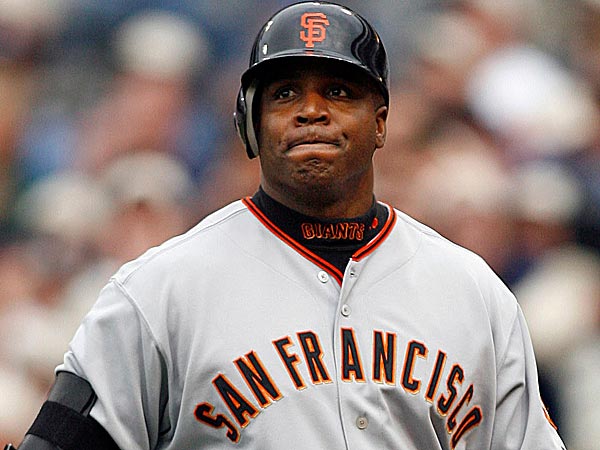
| Year | Age | Tm | Lg | PA | R | H | 2B | 3B | HR | RBI | SB | CS | BB | SO | TB | HBP | IBB | |||||
|---|---|---|---|---|---|---|---|---|---|---|---|---|---|---|---|---|---|---|---|---|---|---|
| 22 Yrs | 12606 | 2227 | 2935 | 601 | 77 | 762 | 1996 | 514 | 141 | 2558 | 1539 | .298 | .444 | .607 | 1.051 | 182 | 5976 | 106 | 688 | |||
| 162 Game Avg. | 684 | 121 | 159 | 33 | 4 | 41 | 108 | 28 | 8 | 139 | 83 | .298 | .444 | .607 | 1.051 | 182 | 324 | 6 | 37 | |||
Pros: All-time HR leader; All-time Walks leader; All-time Single Season HR leader; 7x MVP winner; 14x All-Star; 8x Gold Glove winner; 12x Silver Slugger winner; 2x Batting Title winner; 2x NL HR leader; 3x Hank Aaron Award winner; Founding and only member of the both the 400 HR/400 SB club and the 500 HR/500 SB club; one of only four 40 HR/40 SB players in history; dozens of other single season or career records.
Cons: PED allegations; certified jackhole
Warning: this may sound eerily familiar to something you recently read.
Do we really have to have a discussion about whether Bonds is one of the best players to ever play in the major leagues? Yes, there are allegations of PED usage. But, the guys he was hitting against were using, too. And he still was able to dominate them. As it stands, his OPS+ of 164 would rank him 9th all time among HoF (or ballot eligible) players, ahead of greats like Jimmy Foxx, Stan Musial, Frank Thomas, and Willie Mays. Sounds familiar, no?
Even if you cut out a large portion of Bonds’ career, he is very likely still a Hall of Famer. Most reports have Bonds beginning his PED usage after the 1998 Home Run Chase between Mark McGwire and Sammy Sosa. Bonds was peeved that lesser players than him were getting all the attention for being so one dimensional. He reportedly told a player he just wanted to get paid. So, he joined the crowd. If we simply take Bonds’ career from 1986-1998, we have a hitter with a .967 career OPS (.290/.411/.556), a 164 OPS+, 411 HR, 1216 RBI, 445 SB, 3 MVP awards, 7 Silver Slugger awards, 8 Gold Glove Awards, a league HR title, and was the only player in baseball history with both 400 HR and 400 SB. His 411 HR would rank ahead of Duke Snider, Johnny Bench, and Joe Dimaggio. His RBI total at the time was greater than the career totals of Kirby Puckett, Joe Morgan, and Ryne Sandberg. His OPS at the time would rank him 14th all-time, ahead of Mel Ott, Ty Cobb, Willie Mays, and Hank Aaron.
Bonds was the best player in baseball before he started using PED; he was arguably already one of the all-time greats. Using PED almost certainly allowed him to hang around for several seasons more than he would have been able to otherwise, which allowed him to accumulate large counting numbers to go along with already great rate stats. Would he have passed Hank Aaron without the benefit of PED? Would he have set the single season record for HR without PED? Nobody can know for sure. But that doesn’t do anything to take away from what he had already accomplished by that point in his career.
#1: Ken Griffey, Jr.
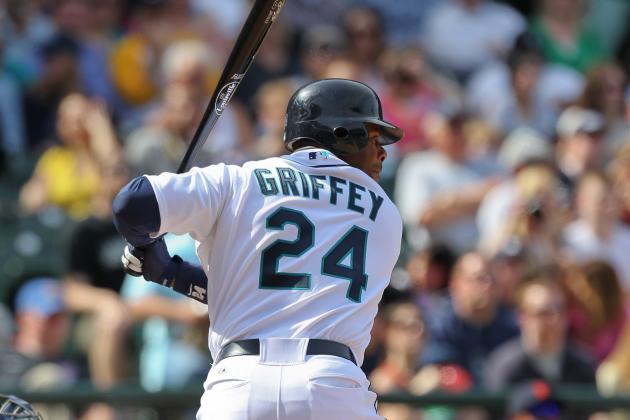
| Year | Age | Tm | Lg | PA | R | H | 2B | 3B | HR | RBI | SB | CS | BB | SO | TB | IBB | |||||
|---|---|---|---|---|---|---|---|---|---|---|---|---|---|---|---|---|---|---|---|---|---|
| 22 Yrs | 11304 | 1662 | 2781 | 524 | 38 | 630 | 1836 | 184 | 69 | 1312 | 1779 | .284 | .370 | .538 | .907 | 136 | 5271 | 246 | |||
| 162 Game Avg. | 686 | 101 | 169 | 32 | 2 | 38 | 111 | 11 | 4 | 80 | 108 | .284 | .370 | .538 | .907 | 136 | 320 | 15 | |||
Pros: 13x All-Star; 10x Gold Glove winner; 7x Silver Slugger winner; 1x MVP winner; 1x All-Star Game MVP; 1x Comeback Player of the Year winner; 4x League HR Champion; MLB All-Century Team; Member of Seattle Mariners AND Cincinnati Reds Halls of Fame; Member of the 600 HR club; a genuinely good guy by all accounts; that swing.
Cons: Are you seriously expecting to see something here?
Finally. Someone we can all agree on. All of us, except those stupid old codgers who are going to leave him off their ballots for some crazy senile reason that makes sense in the oatmeal-addled minds.
Griffey strikes me very much like Stan Musial. He isn’t the best or the career leader in anything, but when you look at the list of accomplishments in the game, you will see his name in the 4th or 5th spot in pretty much every meaningful offensive category. He simply managed to put together one of the best careers the game has seen, all despite breaking down for the last one-third of his career.
I could sit here and spout off the reasons about why Griffey should be in the Hall of Fame. You know all of them. You’ve seen him play. No reasonable person with functioning brain cells believes that Griffey is not a HoF caliber player. So instead, I’ll just leave you with this piece of beauty.
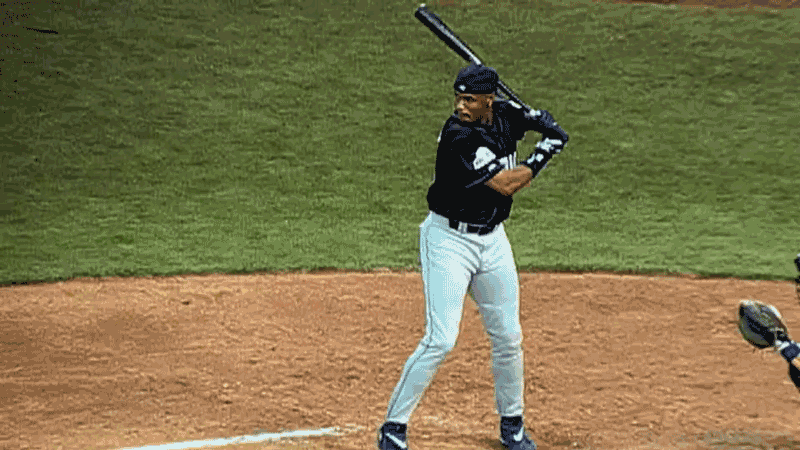
Feel free to Tweet Me or comment below telling me how off base I am.

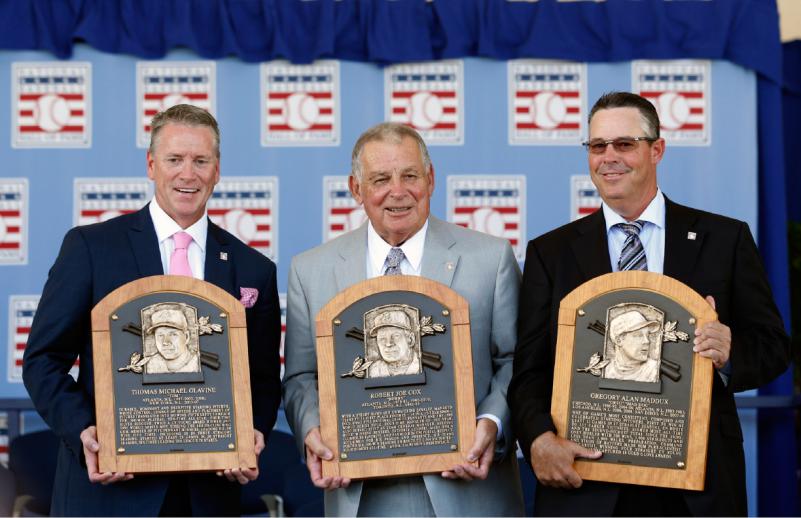
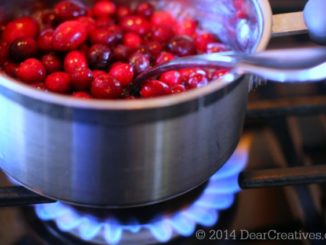
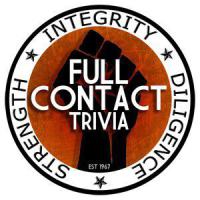
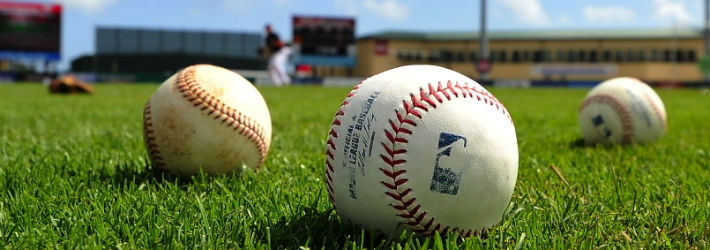
If the pitchers can have surgeries and come out of it with better arms than they were born with then what’s wrong with the hitters using? Nobody is outlawing Tommy John surgery or putting asterisks by the accomplishments.
I wouldn’t say that Tommy John surgery is necessarily performance enhancing, since it is repairing an injury. By that logic, setting a broken bone would be ‘performance enhancing’.
But take something like LASIK surgery to correct poor eyesight. McGwire did it. Maddux did it. Maddux credits it with improving his career. To have a procedure that isn’t repairing an injury or defect, that improves your ability to do your job…I would call that performance enhancing.
Thanks for the read, by the way!